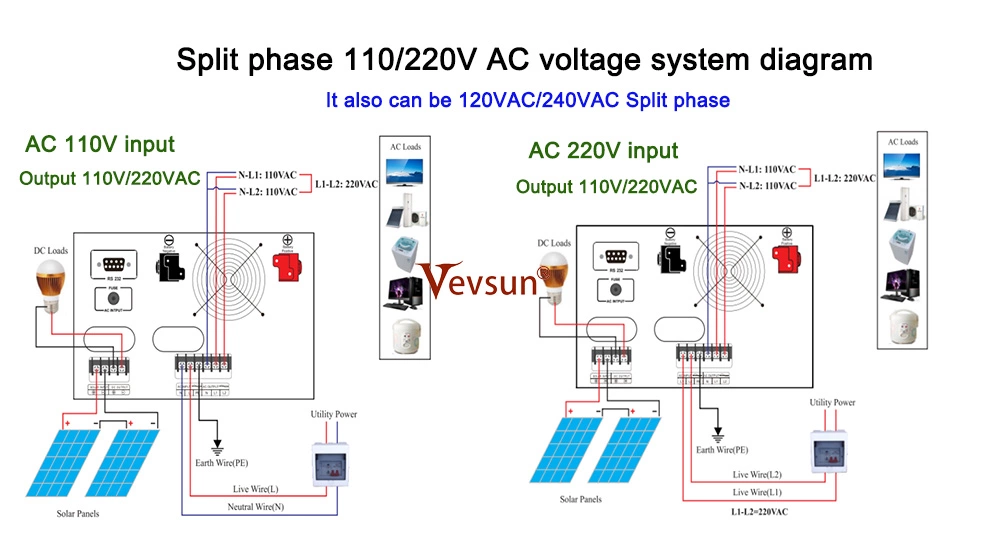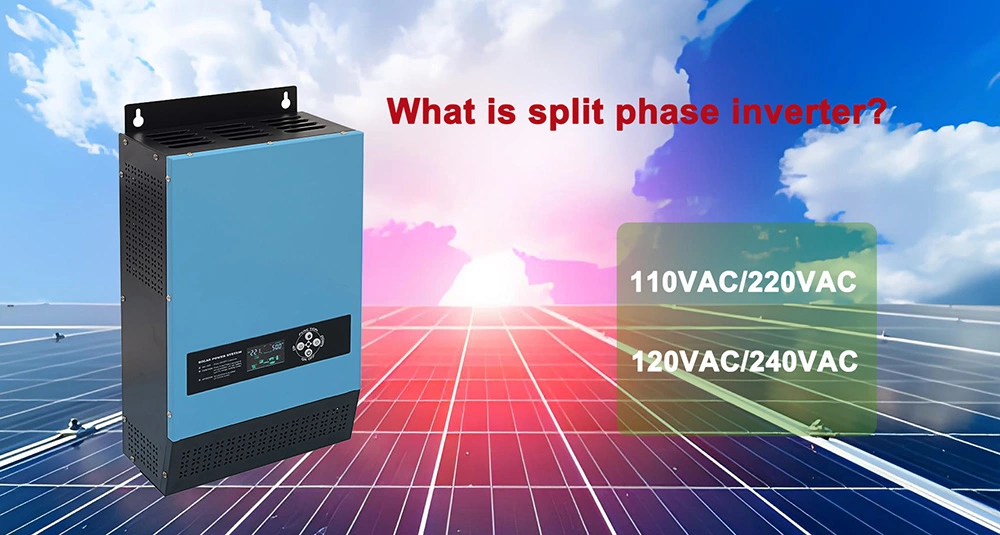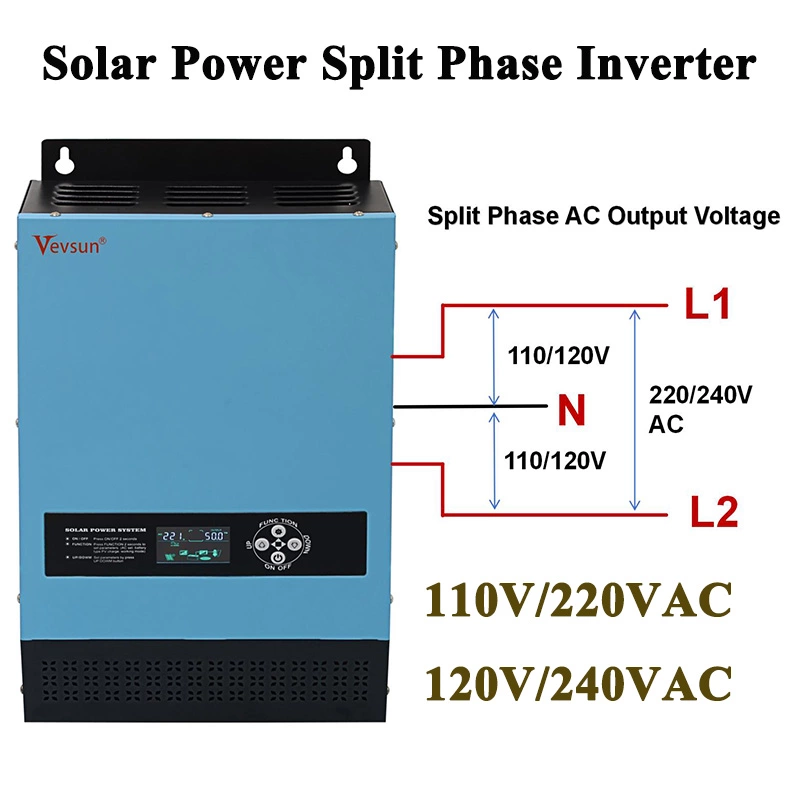What is split phase 120/240V solar inverter?
 Jun 17,2025
Jun 17,2025

 Vevsun
Vevsun
The Evolution of Electrical Standards: From 110V to Split-Phase Inverters
The United States, Britain, and Germany pioneered the use of electricity, with the U.S. leading the adoption of alternators and implementing a 110V grid. Over time, neighboring regions—including Canada, Mexico, Cuba, Colombia, the Cayman Islands, Japan, and Taiwan—also adopted the 110V-120V standard.
Despite the later development of 220V-240V alternators, transitioning to higher voltages proved costly, leading these nations to retain their existing systems. To accommodate diverse power needs, innovations like single-phase, split-phase, and three-phase inverters emerged. Below, we explore their differences and highlight three budget-friendly split-phase inverters.
Quick Navigation
Single Phase vs. Split Phase: Key Differences
What Is Single Phase Power?
What Is a Split Phase Inverter?
How Does a Split Phase Inverter Work?
Best Value Split Phase Inverter
Single Phase vs. Split Phase: What’s the Difference?
The most common single-phase system uses a two-wire setup (live + neutral) for AC power distribution, typically at 50Hz or 60Hz. Voltage peaks twice per cycle, resulting in non-constant instantaneous power.
What Is Split Phase Power?
Common in North America, split-phase systems use a three-wire setup (two live wires + neutral) to deliver 120V/240V residential power. A transformer splits the phase, with two live wires (L1 and L2) and a neutral wire tapped at the center.
L1-N or L2-N measures 120V
L1-L2 measures 240V
Phase difference: 180° (still single-phase)
Despite the opposing currents, the system remains single-phase because it lacks a rotating magnetic field (a requirement for true multiphase systems).
What Is a Split Phase Inverter?
In North America, households use 110V (nominal 120V) for outlets, while heavy appliances (e.g., refrigerators, pumps) require 240V. A split-phase inverter converts DC power (from batteries, solar panels, or generators) into 120V/240V AC for residential and industrial use.
How Does a Split Phase Inverter Work?
Split Phase Mode
Outputs 240V for high-power devices (connected to L1 and L2).
Stores excess energy in batteries.
Single Phase Mode
Delivers 110V for standard appliances (using L1 or L2 + neutral).
Functions like a traditional single-phase inverter.

Best Value Split Phase Inverter
The Vevsun LS 1KW to 6KW split phase inverter is a cost-effective inverter-charger combining:
DC-AC conversion for 120V/240V output or 110V/220V output
MPPT solar charging (10A-100A optional, 99.9% efficiency)
Low Frequency with big transformer, strong load ability.
App WiFi module (optional), easy check solar system data.
See the wire connection and voltage of our LS inverter, one picture is 110VAC input, means connect with one live wire and one neutral wire, one picture is 220VAC input, means the input side connect with live wire 1 and live wire 2.
The LS inverter is two type input connection, customer can according to their request to choose one.
Conclusion
In summary, the choice of the power of the inverter use for your solar system depends on your size and complexity of your solar installation, your budget, and your future expansion plans.
We have professional team to help you analyse which solar inverter is suit for your solar system.
For more informtion and details, please contact with us.

 Home
Home

 What is the difference between high and low frequency inverter?
What is the difference between high and low frequency inverter?  You May Also Like
You May Also Like

 Tel
Tel
 Email
Email
 Address
Address











